Ammonites were shelled cephalopods that died out about 66 million years ago. Fossils of them are found all around the world, sometimes in very large concentrations.
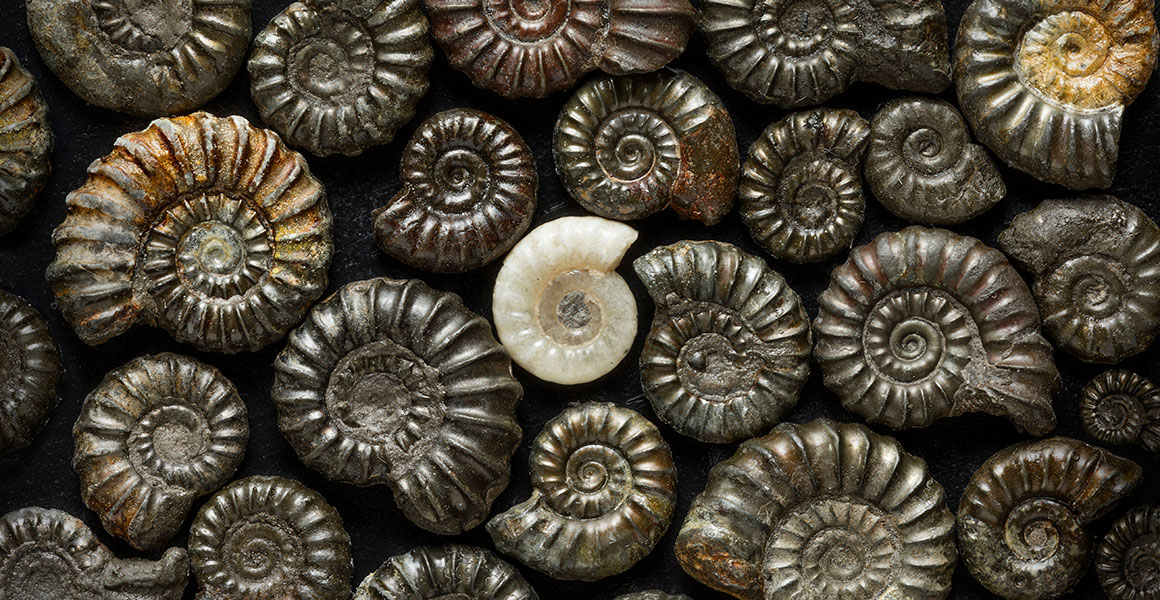
A selection of ammonites from the collections we care for.
The often tightly wound shells of ammonites may be a familiar sight, but how much do you know about the animals that once lived inside?
What were ammonites?
Before we understood what they were, one of the explanations for ammonites was that they were coiled-up snakes that had been turned to stone, earning them the nickname ‘snakestones’. But ammonites weren’t reptiles – they were ocean-dwelling molluscs, specifically cephalopods.
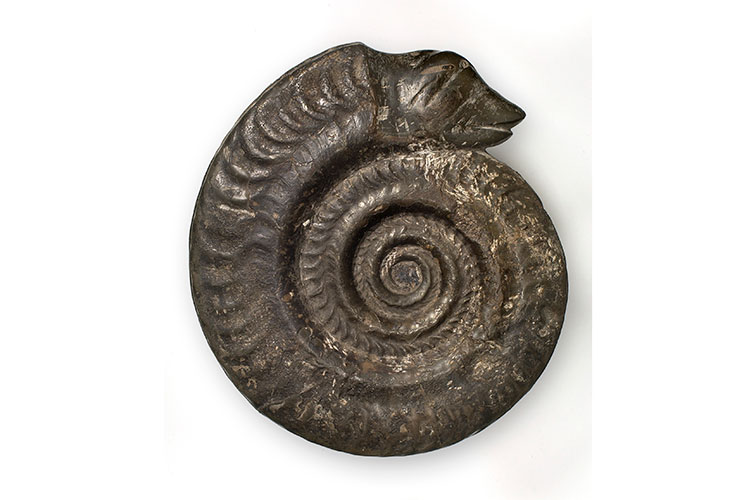
In English folklore, ammonites were once known as snakestones.
“Ammonites are extinct shelled cephalopods. All of them had a chambered shell that they used for buoyancy,” explains Zoë Hughes, our Curator of Fossil Invertebrates.
Cephalopods – members of the Cephalopoda group – are divided into three subgroups. There’s coleoids, which includes squids, octopuses and cuttlefishes, nautiloids and ammonites.
Ammonites’ shells make the animals look most like nautiluses, but they’re actually thought to be more closely related to coleoids.
“Some of their morphology was closer to that of the coleoid group,” says Zoë. “We think it’s more likely that ammonites would have had eight arms rather than lots of tentacles like a nautilus, though the shell is more similar to that of a nautilus.”
Ammonites were born with tiny shells and, as they grew, they built new chambers onto it. They would move their entire body into a new chamber and seal off their old and now too-small living quarters with walls known as septa.
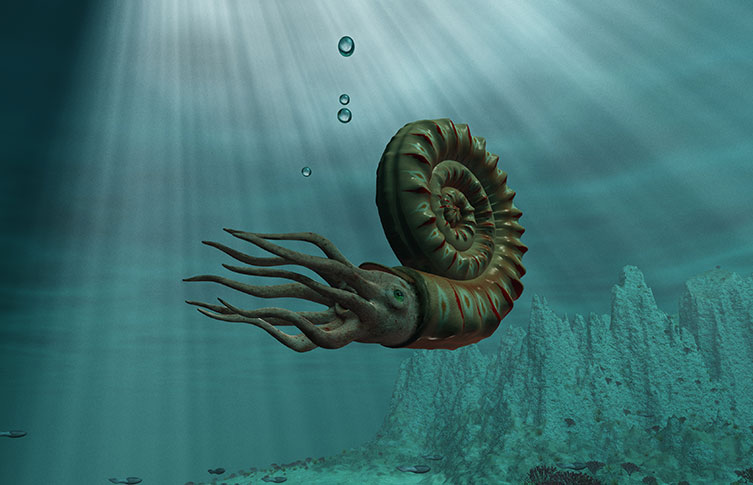
Ammonites looked a bit like nautiluses but are thought to be more closely related to coleoids, a group that includes octopuses and cuttlefish. © Esteban De Armas/Shutterstock
“The ammonite would have lived in one chamber, but we don’t know how often they built a new one,” Zoë adds.
“Previously it’s been suggested this could have been a monthly occurrence, but there’s no evidence for that. Some studies looking at the chemical composition of the shells – a field called sclerochronology – are starting to gain some insight of how long ammonites might have lived.”
Ammonites’ growing shells typically formed into a flat spiral, known as a planispiral, although a variety of shapes did evolve over time. Shells could be a loose spiral or tightly curled with whorls touching. They could be flat or helical. Some species would begin growing their shell in a tight spiral but straighten it out through later growth phases. There were also some more unusual shapes – the species Nipponites mirabilis, which is found in Japan, is exceptionally rare and looks a bit like a knot.
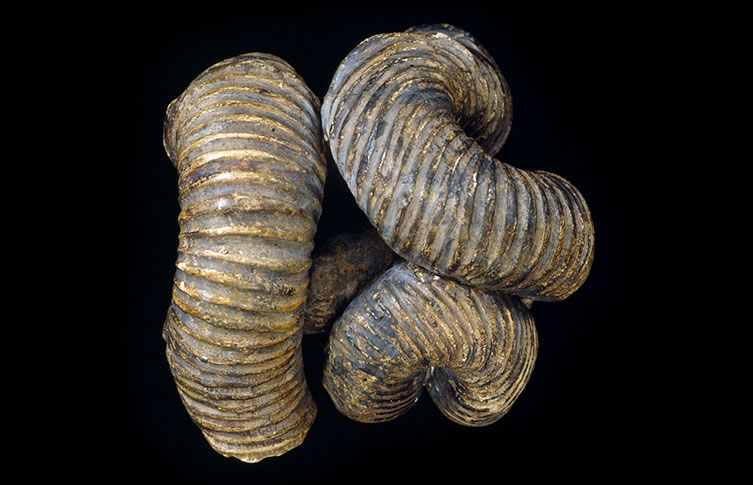
Nipponites mirabilis ammonites grew in an unusual knot shape, rather than in a typical spiral.
While ammonite shells are abundant in the fossil record, it was only recently that scientists have found a very rare fossil of the soft parts of an ammonite. However, fossilised evidence of ammonite arms is yet to be found.
Until now, a lot of what we know about ammonites has been inferred based on what we see in living cephalopods.
How old are ammonites?
The subclass Ammonoidea, a group that is often referred to as ammonites, first appeared about 450 million years ago.
Ammonoidea includes a more exclusive group called Ammonitida, also known as the true ammonites. These animals are known from the Jurassic Period, from about 200 million years ago.
Most ammonites died out at the same time as the non-avian dinosaurs, at the end of the Cretaceous Period, 66 million years ago.
“We didn’t quite lose all of them at the end of the Cretaceous. A few species continued into the Palaeogene in the Western Interior Seaway before dying out,” says Zoë.
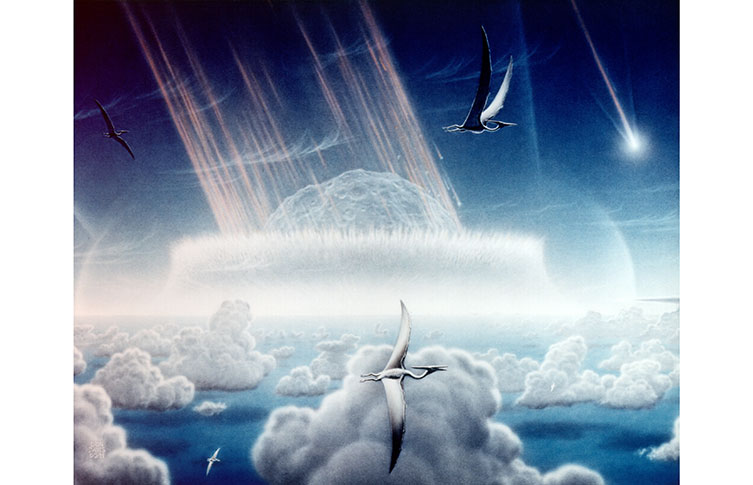
The astroid that hit Earth 66 million years ago and ended the age of dinosaurs is also thought to have been responsible for the demise of most ammonites. Image by Donald E Davis via Wikimedia Commons, public domain.
Why did ammonites go extinct?
At the end of the Cretaceous Period, an asteroid colliding with Earth brought on a global mass extinction. A lingering impact winter halted photosynthesis on land and in the oceans, which had a major impact on food availability and was devastating for ammonites.
Nautiloids, however, which had ancient relatives that lived at the same time as ammonites, survived this mass extinction. It’s thought this is in part linked to these groups’ preferred water depths.
“Nautilus survived probably because it lives deeper in the ocean. Deeper environments were less affected by what was going on in shallow water environments. This is a pattern that can be seen in other groups, aside from cephalopods – fish, for example,” Zoë explains.
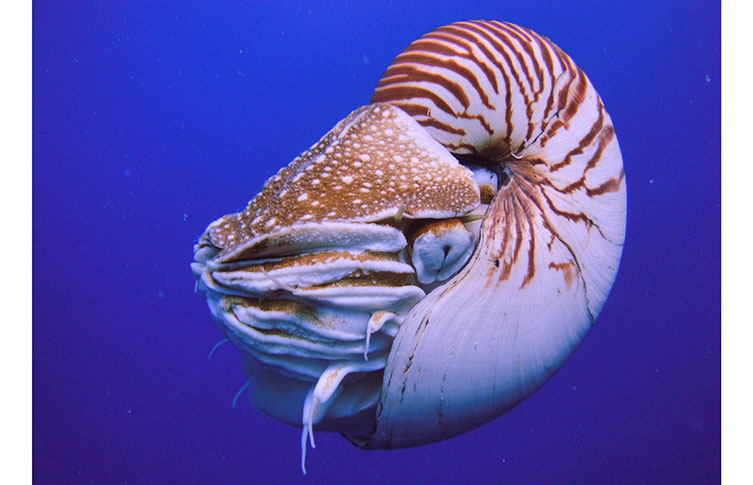
Although ammonites mostly died out 66 million years ago, other cephalopods, such as nautiluses, survived. Image © Manuae via Wikimedia Commons, licensed under CC BY-SA 3.0
The size of hatchlings may also have played in the nautiluses’ favour as they were larger and would have been less restricted by the size of food available to them.
How many ammonite species were there?
Scientists can tell species of ammonites apart through several characteristics including shell shape, size, age, location, features such as the number and spacing of ribs, defensive spines or shell-strengthening ornamentation.
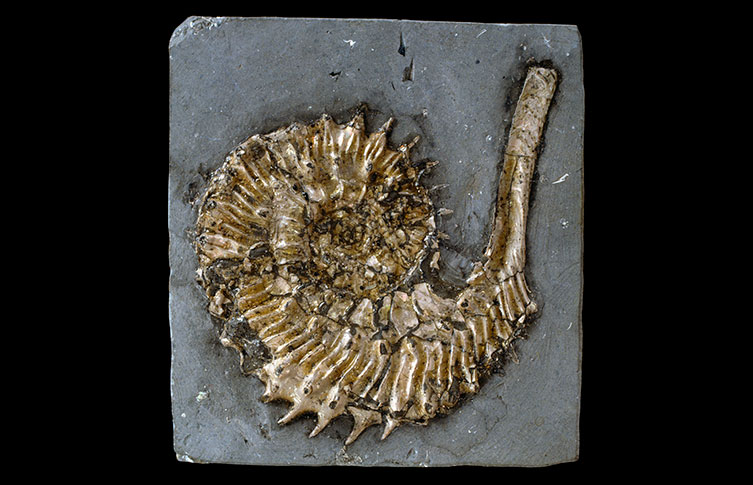
This is a Kosmoceras phaeinum ammonite specimen. We know it’s a male from the long prongs, known as lappets, sticking out near the opening of the shell. They might have been used by the male to hold onto the female during mating, a bit like shark claspers.
But figuring out exactly how many species have been found so far is a bit tricky.
Like modern cephalopods, ammonites displayed sexual dimorphism, which is the noticeable difference in appearance between sexes. But when ammonite fossils that looked unique were found in the past, they tended to be recorded as new species instead of as the microconch – male – or macroconch – female – of an existing species, as this difference between the sexes was not yet known about.
However, it’s estimated that over 10,000 species of ammonite – possibly even over 20,000 – have been discovered.
“Ammonites were quite diverse and evolved rapidly, so if you sample stratigraphically through rocks, you can actually see the evolution and the changes through them,” says Zoë.
How big were ammonites?
Ammonites came in a range of sizes, from just a few millimetres to many times bigger. Larger sizes were more common from the Late Jurassic onwards.
The largest known species of ammonite is Parapuzosia seppenradensis from the Late Cretaceous. The largest specimen found is 1.8 metres in diameter but is also incomplete. If it were complete, this ammonite’s total diameter could have been from 2.5–3.5 metres.
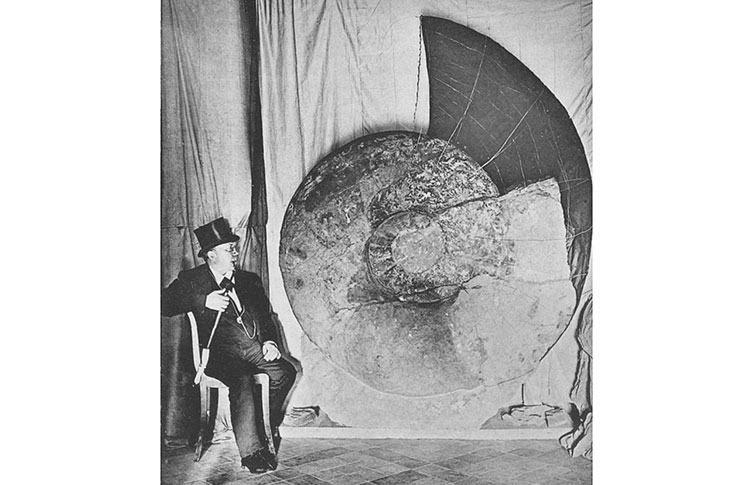
Parapuzosia seppenradensis is the largest known species of ammonite. Image by Hermann Landois via Wikimedia Commons, public domain.
Where did ammonites live?
Ammonites lived all around the world. Like their modern-day cephalopod relations, they were exclusively ocean-dwelling. They tended to live in more shallow seas and may have had a maximum depth of about 400 metres.
What did ammonites eat and what ate them?
Though it would largely have depended on their size, ammonites would likely have eaten similar things to today’s cephalopods, such as crustaceans, bivalves and fish. Smaller species would probably have eaten plankton. Some other species may have been scavengers, like living nautiloids can sometimes be.
Ammonites would also have served as food for other marine animals. There’s evidence of mosasaurs and ichthyosaurs having eaten them, and some fish would likely also have considered them prey.
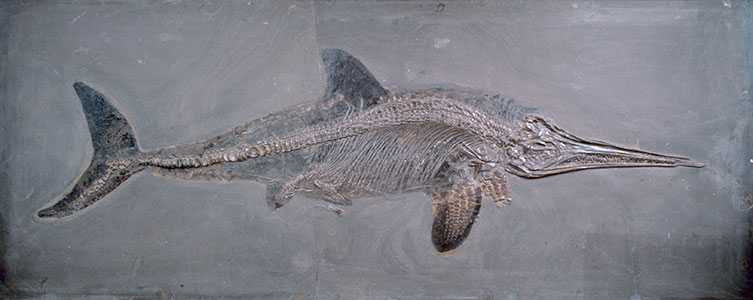
Ichthyosaurs were among the marine animals that would have preyed on ammonites.
Why are ammonites important to science?
Ammonites can be a useful tool for scientists. Because they’re so common and evolved so rapidly, they’re excellent to help determine the age of the rocks they were fossilised in.
Much of the Mesozoic aged rock in Europe has been sectioned into ‘ammonite zones’, where rocks in different areas can be associated with each other based on the ammonite fossils found in them.
“I’ve done a few identifications where there are bits of ichthyosaur and an ammonite has also been found, and they need it identifying. If you can identify the ammonite, you can really narrow things down. They’re a really good indicator for biostratigraphy,” says Zoë.
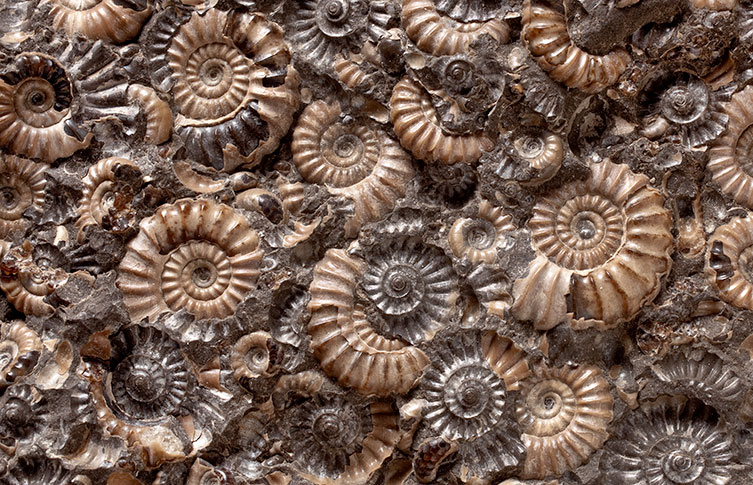
Another potential use for ammonite fossils could be for telling us about how animals responded to climate change in the past.
“Shelled marine animals can help us look back into the past at what was going on in terms of climate change following extinction events. If we have known periods of warming or cooling, we can then infer that into modern climate science,” Zoë explains.
“Looking at size change will tell you an awful lot. Quite often after an extinction event a lot of shelled animals shrink because they don’t have the resources they need to grow. If there isn’t the resource to build their shells, it’s a bit of a struggle for them. You see that in a lot of organisms.”

Discover oceans
Find out more about life underwater and read about the pioneering work of the Museum's marine scientists.
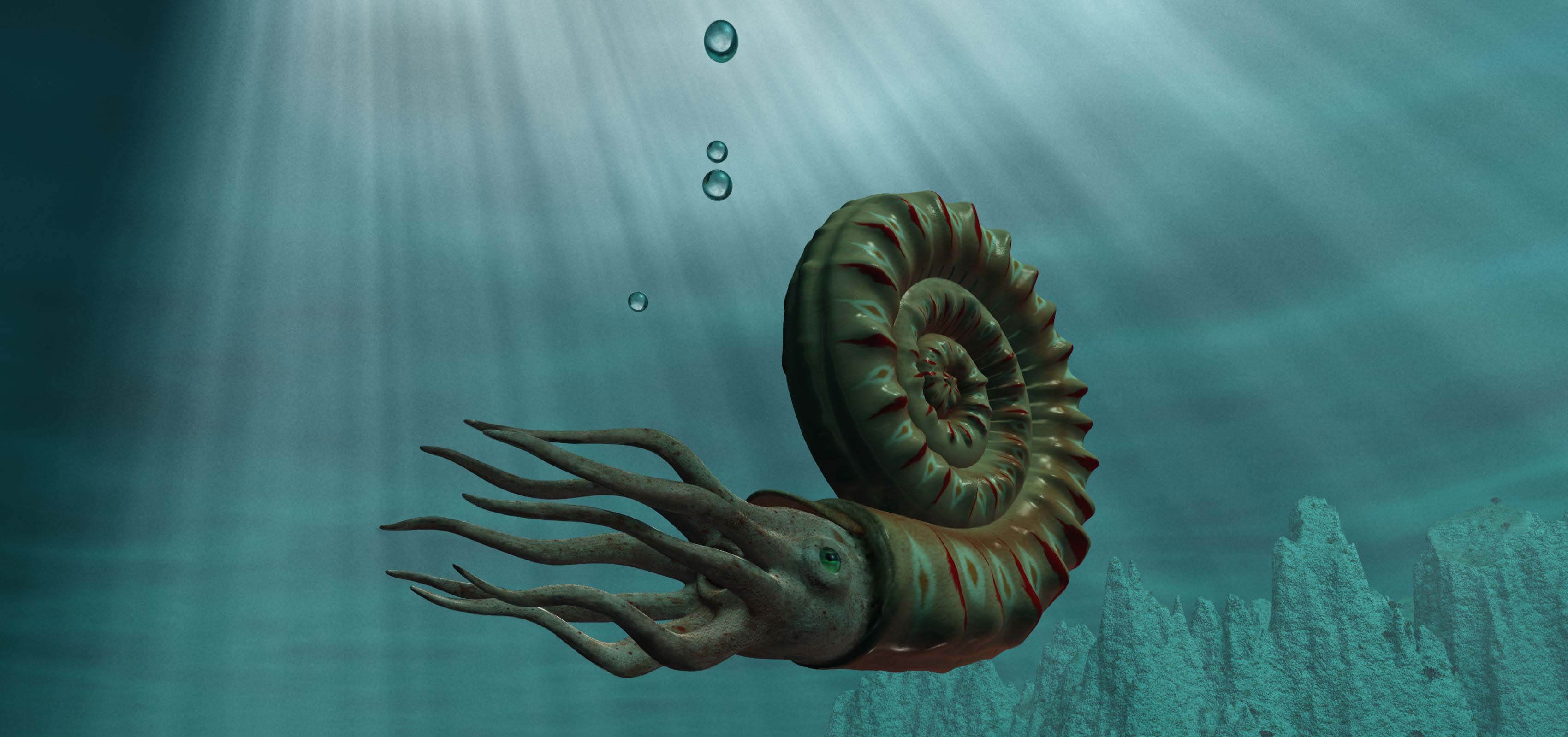

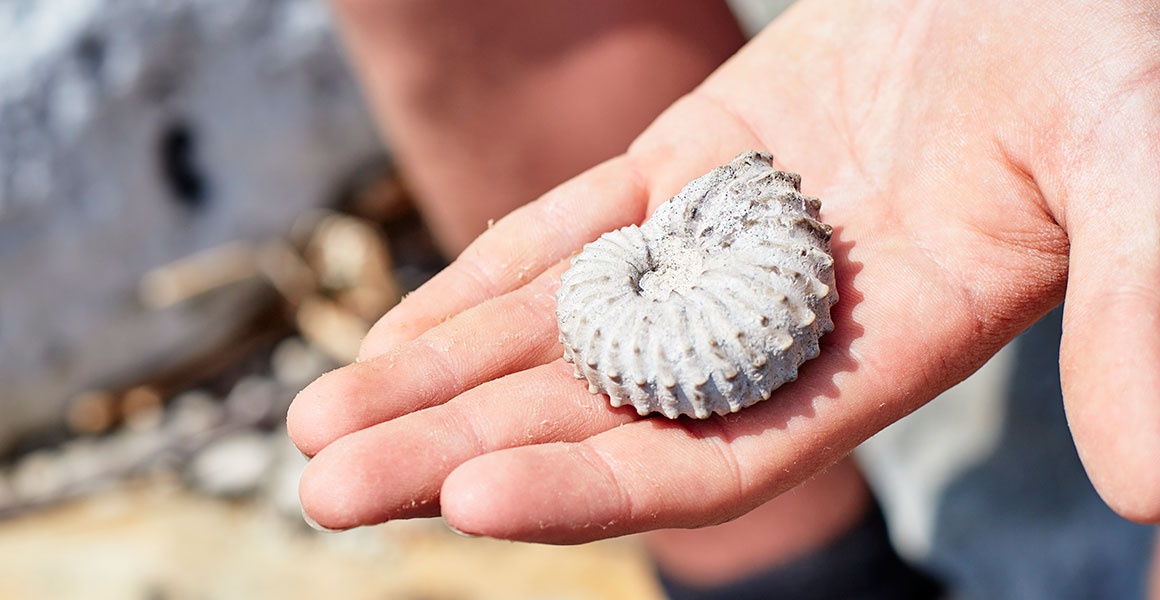
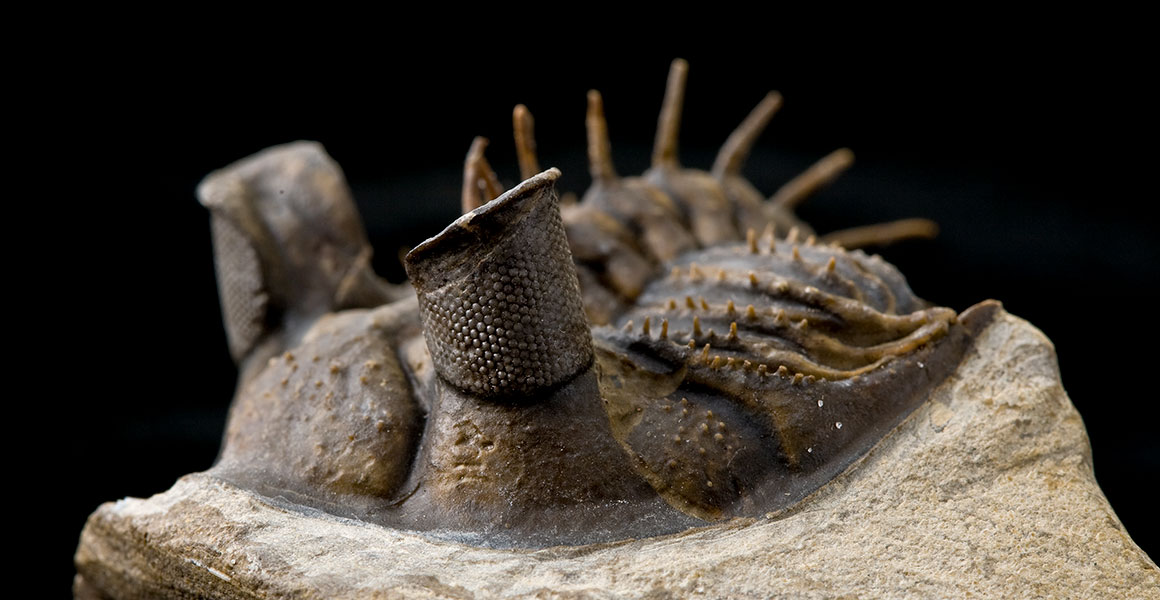
Don't miss a thing
Receive email updates about our news, science, exhibitions, events, products, services and fundraising activities. We may occasionally include third-party content from our corporate partners and other museums. We will not share your personal details with these third parties. You must be over the age of 13. Privacy notice.
Follow us on social media